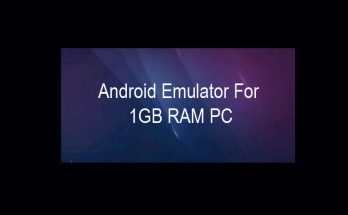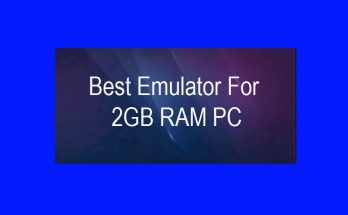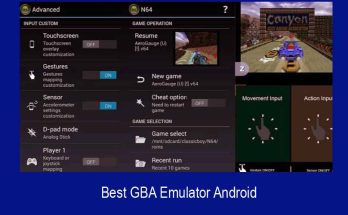The chip that powers the US Samsung Galaxy S22 offers an improved camera and 5G capabilities.
Qualcomm today announced the Snapdragon 8 Gen 1, its first chip in a new naming scheme and the likely processor for the US Samsung Galaxy S22 and OnePlus 10 phones.“The new kind of experience that Snapdragon 8 Gen 1 offers can transform flagship devices with breakthrough 5G speeds, pro-grade cameras, smart personal assistants, and elite gaming platforms,” Qualcomm said in a blog post.
8 Gen 1 comes as Qualcomm is more dominant than ever. Apple’s M-series processors in its new MacBook Pro laptops set the standard for performance for PCs with ARM-based chipsets and quickly eclipsed Qualcomm’s three-year plan to integrate its chips. Windows laptops. MediaTek is now the leading supplier of chipsets and has just announced the Dimensity 9000, its first real competitor to the 8 series processors.
But this year also brings new opportunities for Qualcomm, even in the traditional smartphone space, says Alex Katouzian, senior vice president of Qualcomm.“The point is, Huawei is bankrupt and most of that volume is transferred to the OEMs we work with… change,” he said.
“Snapdragon 8 Gen 1” is the first of a new numbering system for Qualcomm. For the past 10 years, it has numbered three-digit chips, starting with 200, 400, 600, 700, and 800, depending on wattage. But the company has up to 888+, 780G, 695, and 480+, according to a slide from Qualcomm, and since it doesn’t want to change the first digits or switch to hex, it had to do something about it. (Still, how cool would the Snapdragon 8FE be? Maybe just for old geeks.)
Qualcomm has yet to explain what it will do if it has to release multiple chips of the same series in the same year it did this year when it released the 870, 888, and 888+.
We’ll be doing a lot of testing and practice of the new chipset here at Snapdragon Summit over the next few days, but here are the first details on the Snapdragon 8 Gen 1.

The CPU Wars, They Begin Again
Qualcomm has long tried to get people to stop talking about processors. Apple forces his hand.
The CPU, the universal Swiss army knife of computing, does everything you need, but it isn’t necessarily designed for a specific task. Over the past 10 years, Qualcomm has instead focused on chips for specific tasks: a highly optimized sensor hub, an image signal processor, or an artificial intelligence unit. This makes sense in the world of low-power smartphones, as these specialized blocks are generally more energy-efficient.
Qualcomm turned to the processor designs of its partner ARM. In my preview, there isn’t even a CPU-specific slide! But then two things happened: MediaTek caught up with them and Apple beat them.
The Snapdragon 8 Gen 1 has an ARM Cortex-A2 core that runs at up to 3 GHz, three A710 cores, and four A510 cores, giving it 20% better performance and 30% less power consumption. it offers the Snapdragon 888, according to Qualcomm. Vice President of Product Management Ziad Asghar.
The new Adreno GPU is 30% faster than the Snapdragon 888, with 25% energy savings, according to Qualcomm.
On the other hand, I hate to mention it, but the MediaTek Dimensity 9000 released last week has the exact same CPU core design. And with pure CPU measurements, the Density could even outperform the Snapdragon due to faster RAM support: while Qualcomm uses 3,500 Mbps LPDDR5 memory, MediaTek can theoretically use 7 LPDDR5x memory. 500 Mbps.
The Snapdragon 8 Gen 1 has many other features that are better than the Density 9000, but we are talking about processors here.
We’ll be reviewing the new Snapdragon later this week and telling you how it works.
Meanwhile, Apple’s M-series processors with custom cores have ignited the PC world so much that Qualcomm’s Snapdragon chipsets for Windows have failed for the past three years. Part of the reason for this is that Apple was in control of its operating system and tools and was able to move its entire platform to ARM in a way that Windows couldn’t. But part of that is just that the M series processors are better and PCs are much, much more dependent on the processor than phones.
But other changes will follow. Last year, Qualcomm bought Nuvia, a startup made up of some of the engineers behind Apple’s A-series processors. At an analyst event earlier this month, Qualcomm CEO Cristiano Amon said the first chips with custom Nuvia cores would start sampling in late 2022 and would be “competitive” with the processors of the Apple M series.
“So that we now have the Nuvia assets onboard and work even more closely with Microsoft than before, the partnership allows us to bring some kind of virtual vertical capacity to the Windows marketplace so that this ecosystem can thrive as well. way. . said Katouzian.
Because they’re off-cycle, these processors will likely enter PC-centric chipsets first, and then eventually followed by the Snapdragon 8 series in late 2023.
Driving AI Home
Qualcomm’s artificial intelligence engine, one of the most publicized and enigmatic units in a smartphone chipset, has the “highest artificial intelligence hardware performance in the industry,” according to the company, 4 times the performance compared to last year’s trip.
“We’ve doubled the shared memory, we can run bigger models, and we can do a lot more to store the information there,” says Asghar.
The name has also changed. “Hexagon DSP” is gone; instead, we have the “Hexagon Processor” and the “Qualcomm AI Engine”.
Measuring the performance of AI drives is an extremely complicated task, and they all seem to do it differently, using different AI workflows and issues. The best Qualcomm can offer are a few examples of why you might need it.
Many AI applications work in conjunction with the camera – filters, for example, bokeh videos, or anything that requires scene analysis, like Smart HDR, to properly expose human faces in low light. One of the craziest and scariest apps is “Sentiment Analysis,” which scans the content of messages, for example, to intelligently send you notifications only from really horny people.
Leading in Camera?
The Snapdragon 8 Gen 1 has three 18-bit Image Signal Processors (ISP) that record up to three 36 MP cameras simultaneously; Simultaneous recording of two 64 and 36 MP cameras; or 108MP camera. For videos, the chip supports 8K HDR video with 30 frames per second and 720p slow motion with up to 960 frames per second.
A new ISP unit connected to the low power sensing hub allows the camera to power on without waking up the rest of the system for low power Face ID-like experiences.
The Density 9000 outperforms it on some specs, but I’m not sure anyone wants it. The Snapdragon 8 Gen 1 transmits 3.2 Mpx / sec of data and supports photo recordings up to 200 MP; The Density claims a 320MP photo capture, which seems overkill from what I’ve seen on smartphones so far.
The 8 Gen 1 really shines when you combine the ISP with the AI processor or other software, says Qualcomm’s Jud Heape. Video bokeh (like the Samsung Galaxy S21), wide-angle photo correction (like the OnePlus 9 Pro), better focus and better white balance on faces with different skin tones (like the Pixel 6), and dynamic range is improved by combining the new ISP with other components, Heape says.
The proof, of course, lies in the components chosen by the device manufacturers. Samsung, in particular, insists on its own photo editing software, which sometimes works well and sometimes not very well (as seen with the disastrous Galaxy S20 Ultra which started with serious focusing issues).
All the 5G
The Snapdragon 5G announcements tend to be a bit disappointing as modems were announced earlier this year, in this case, the X65 with its “10Gbps” promise. (You will not get 10 Gbps).
The most important feature of the X65 is the aggregation of 3 Sub-6-5G carriers, which means that operators with three different segments of the low and mid-band 5G spectrum can combine them. (The previous X60 only had a 2x Sub-6 aggregation.)
This opens up opportunities for the three main US operators. Verizon and AT&T will likely have 5G radio waves in the 3.45-3.55 GHz and 3.7-4 GHz bands, and they will want to combine them with a low 850 MHz band for the uplink range. It’s three. T-Mobile upgrades to 600 MHz and 2.5 GHz, but its stock at 2.5 GHz is halved in some metropolitan areas, making a 600 / 2.5 / 2.5 setting potentially useful for T-Mobile.
Since we scored the Density 9000 also has triple carrier aggregation. But it still lacks millimeter waves, the short-range, high-band system that Verizon still relies heavily on on. If you want millimeter waves, and Verizon certainly does, you should always go for Qualcomm.
According to Durga Malladi, senior vice president of engineering at Qualcomm, new millimeter-wave modules based on the eighth generation will be introduced in the phones. The new modules are thinner and smaller so that they can be placed in various places in a device. They support higher power levels for better reception and more frequency bands, as mmWave networks are used all over the world.
“There have been a lot of improvements to the KPIs – new risers and a lot of toe-in/tuck in terms of power and strength,” he says.






